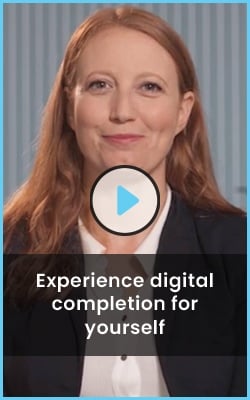The SBA’s
Payment Protection Program managed to infuse critical funds into small businesses around America in their time of greatest need. Yet for these businesses to get their loans forgiven, they need to prove to their lenders that 100% of the funds were used to maintain employee headcount and cover basic expenses such as rent and utilities. This requires borrowers to fill out a detailed application form and provide ample documentation showing how the funds were used.
Traditional methods of applying for loan forgiveness, such as bringing physical paperwork to a local branch, are insufficient today. Banks are inundated with such forgiveness applications, on top of other loan modification requests. And small businesses are anxious to get their loans forgiven as quickly as possible. With physical paperwork, this is an impossibility. Furthermore, the continued threat of the coronavirus calls for fully remote, digital loan forgiveness applications.
We’ll dive a little deeper into the urgency of digitizing PPP loan forgiveness, and steps banks can take to digitize quickly and easily.
Banks Need to Digitize Their PPP Forgiveness Applications—Now
Requiring small businesses to hand-deliver piles of physical documentation and fill out a lengthy PPP forgiveness form is a tall order, both for banks and the businesses they serve. Here’s why digitizing the process is essential for the customer experience and the bank’s efficiency of operations.
Why Small Businesses Need Digitized PPP Forgiveness
- It’s safer for customers: Small business owners who are forced to show up at a physical bank branch are putting their health at risk. Imagine the irony of a business owner whose very attempt at ensuring the continuity of their business—the PPP loans—is jeopardized due to the requirements of the loan forgiveness itself.
- It’s easier: Small businesses who have taken out PPP loans are already struggling to survive and get through the day, week, and month. Requiring small business owners to print, scan, and manually fill out forms is a time-sucking task that takes them away from keeping their business going. Digitization allows small businesses to efficiently get their loans forgiven with minimal impact on their time.
- It reduces the likelihood of error: Busy small business owners are likely to make mistakes on the loan forgiveness application that aren’t easily fixed with physical paperwork. On the other hand, call center agents can easily guide customers through digital loan applications via phone conversation, and they can be modified if needed.
Why Small Businesses Need Digitized PPP Forgiveness
- It’s safer for bank agents: Even hand sanitizer, face masks, and other safety measures can’t beat the ultimate safety of remote transactions. Banks agents shouldn’t be forced to risk their health, and interactions with the public should be reserved for circumstances where there is no other option. Processing loan forgiveness applications is not such as circumstance.
- It’s more efficient: The current economic crisis is seeing a surge in requests for loan deferrals, mortgage refinancing, loan applications, and of course, PPP forgiveness. Banks are already swamped with applications of various kinds; processing and filing physical paperwork, chasing customers for missing documents, and dealing with form errors means agents are likely to be overwhelmed and unable to efficiently complete processes. On the other hand, digitizing the entire PPP application process allows agents to move onto the next customer faster.
- It supports compliance efforts: Digital processes aren’t just easier and faster than physical paperwork; they are also equally if not more compliant. Forms and documents submitted through a secure digital channel can be safely and securely stored in a tamper-proof CRM.
What Can Be Digitized in the PPP Loan Forgiveness Process?
The good news for banks is that practically every aspect of the PPP loan forgiveness application can be digitized. The SBA requires the following documents to be submitted, all of which can easily be digitized:
- The loan forgiveness application itself, which can be converted into an eForm that customers can fill out in a mobile-optimized environment and instantly shared with an agent.
- Payroll reports showing cash paid to employees
- Payroll tax filings (e.g., Form 941)
- Receipts
- Copies of lender amortization schedule (mortgage interest), current lease agreement (business rent), and utility invoices (utilities)
- Bank account statements
- Accounting records
- Written offer of rehire and subsequent employee rejection
All of the above documents, such as records, statements, and receipts, can be photographed with a smartphone camera and sent to the bank agent, who can then submit them to the necessary part for review and approval. Here is how it works with Lightico:
- The agent sends a text message to the customer containing a link to a secure mobile environment.
- The customer fills out the loan application form, which is optimized for a mobile phone.
- The customer snaps a photo of all the documents and uploads it to the session.
- The agent saves all forms and documents and submits them instantly for approval.
Digitized PPP Forgiveness For Better CX and Efficiency
By digitizing the entire PPP forgiveness process, banks can increase their turnaround times, reduce the burden on bank agents, improve the customer experience, and ensure all eligible loans are forgiven quickly and efficiently. Especially during high-stress times such as a pandemic, digitization can be a critical way of reducing tension and improving the satisfaction of both employees and the customers they serve.



